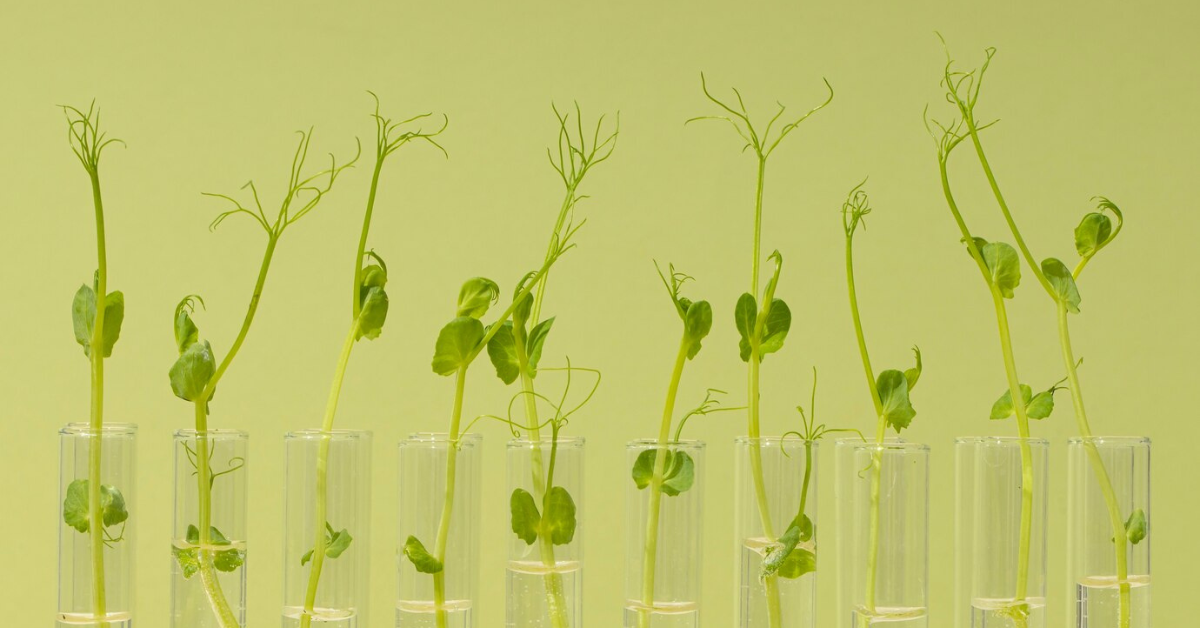Plants may appear still, but they’re constantly reacting to their environment. One of the most fascinating ways they do this is through thigmotropism. This process allows certain plant parts to grow directionally in response to physical contact with a solid object. Whether it’s a vine wrapping around a pole or a tendril curling after touching a wire, this behavior reveals the subtle intelligence of plant life.
This article explores the science behind thigmotropism, why it occurs, its different types, examples from nature, and how it can be applied in modern agriculture.
Table of Contents
- What is Thigmotropism?
- How Thigmotropism Works
- Types of Thigmotropic Responses
- Examples of Thigmotropism in Nature
- Thigmotropism in Different Plant Structures
- Role of Hormones in Thigmotropism
- Comparison with Other Tropisms
- Applications in Agriculture and Botany
- Case Studies and Research Highlights
- Challenges in Studying Thigmotropism
- Future Prospects in Plant Science
- Frequently Asked Questions (FAQs)
- Conclusion and Call-to-Action
- Meta Description
What is Thigmotropism?
Thigmotropism is a directional growth movement of a plant in response to physical touch or contact. When a plant organ such as a tendril or stem touches an object, it alters its growth to move toward or around that object. This movement is a survival and support mechanism seen mainly in climbing plants, but also in fungi and even some flowering species.
The term is derived from the Greek word “thigma” meaning touch and “tropos” meaning turn.
How Thigmotropism Works
Thigmotropism is triggered by mechanical stimulation. When part of a plant comes into contact with an object:
- Cells on the touched side stop elongating
- Cells on the opposite side continue to grow
- The result is a bending or wrapping motion around the object
This differential cell elongation is controlled by internal signals, particularly plant hormones like auxins and ethylene, and by calcium ion signaling.
Types of Thigmotropic Responses
Plants can show either positive or negative thigmotropism:
- Positive thigmotropism: Growth occurs toward the point of contact. Tendrils wrapping around a trellis is a common example.
- Negative thigmotropism: Growth is directed away from the point of contact. This can be seen in some roots that grow away from hard surfaces.
Examples of Thigmotropism in Nature
Here are some well-known examples of thigmotropic behavior:
- Pea plants (Pisum sativum): Their tendrils coil around any nearby structure to provide support.
- Cucumber vines (Cucumis sativus): They wrap around sticks and wires as they grow vertically.
- Passionflower (Passiflora): Shows rapid thigmotropic movement when its tendrils find a support.
- Fungi like Rhizopus: Exhibit hyphal growth in response to contact with a substrate.
These adaptations help plants secure themselves, climb toward sunlight, and spread over larger areas.
Thigmotropism in Different Plant Structures
Thigmotropism is not limited to tendrils. Various plant structures can respond to touch:
| Plant Structure | Response to Touch | Example |
| Tendrils | Coiling around objects | Grape vines, sweet peas |
| Stems | Bending or twining | Morning glories, beans |
| Roots | Redirecting away from hard objects | Some grass and legume roots |
| Hyphae (Fungi) | Surface-sensitive directional growth | Molds like Rhizopus |
This adaptability enhances the plant’s ability to survive in various environments.
Role of Hormones in Thigmotropism
Plant hormones play a crucial role in thigmotropism. The key players include:
- Auxins: These hormones redistribute to the side opposite the stimulus, encouraging elongation on that side.
- Ethylene: Regulates mechanical stress responses.
- Calcium ions (Ca2+): Serve as secondary messengers, signaling that contact has occurred.
These biochemical signals coordinate the growth response, enabling the plant to adapt effectively to its surroundings.
Comparison with Other Tropisms
| Type of Tropism | Stimulus | Direction of Growth | Examples |
| Thigmotropism | Touch/contact | Toward or away from object | Tendrils of peas, vines |
| Phototropism | Light | Toward light | Sunflowers, houseplants |
| Gravitropism | Gravity | Roots down, shoots up | All seed plants |
| Hydrotropism | Moisture | Toward water | Roots in arid soils |
| Chemotropism | Chemicals | Toward/away from chemicals | Pollen tube toward ovule |
Understanding these helps in distinguishing how plants respond uniquely to different stimuli.
Applications in Agriculture and Botany
Thigmotropism has practical applications:
- Vertical farming: Selecting crops with thigmotropic abilities for limited-space farming.
- Trellising systems: Designing support structures that encourage climbing behaviors.
- Plant breeding: Enhancing thigmotropic traits for improved support and light exposure.
- Stress research: Studying how touch-response mechanisms help plants adapt to challenging environments.
These uses help in optimizing plant productivity and resilience.
Case Studies and Research Highlights
Recent studies have expanded our understanding:
- Arabidopsis thaliana: Research identified specific genes regulating touch-induced growth patterns.
- Tendril behavior modeling: Scientists use computational models to simulate how tendrils sense and wrap around supports.
- Ethylene studies: Found that climbers produce more ethylene in response to mechanical stimulation than non-climbers.
Such insights provide foundational knowledge for innovations in agriculture and synthetic biology.
Challenges in Studying Thigmotropism
Despite progress, several hurdles remain:
- Environmental control: Simulating natural contact events in labs is complex.
- Molecular pathways: Still not fully understood, especially in non-model plants.
- Inter-species variation: Different species show varied sensitivity to touch, complicating standardization.
Overcoming these challenges requires advanced imaging, genetic engineering, and multi-disciplinary approaches.
Future Prospects in Plant Science
As plant science evolves, thigmotropism is gaining interest for its adaptive advantages. Future directions include:
- Development of crops with enhanced mechanical sensing for structural support
- Genetic engineering of touch-responsive traits
- Integration into robotic systems that mimic plant behavior (biomimicry)
Such innovations promise smarter agricultural systems and a deeper appreciation for plant intelligence.
Conclusion
Thigmotropism is more than just a quirky plant behavior. It’s a window into the dynamic ways plants interact with their environment. From providing climbing support to guiding root systems away from obstacles, this phenomenon plays a vital role in plant survival and success.
For gardeners, farmers, and scientists alike, understanding thigmotropism offers both practical advantages and a deeper respect for plant behavior. As research advances, we’re sure to uncover even more secrets in the subtle world of touch-sensitive growth.
Explore more about plant behaviors and stay connected with nature’s silent movements.S
Frequently Asked Questions (FAQs)
Q1: Is thigmotropism unique to plants?
While common in plants, fungi and some bacteria also show touch-based growth behavior.
Q2: What part of the plant shows the most thigmotropism?
Tendrils and twining stems exhibit the strongest responses.
Q3: Can thigmotropism be reversed?
In most cases, once a tendril coils, it doesn’t uncoil unless damaged or dead.
Q4: How quickly do plants respond to touch?
Responses can range from minutes to hours, depending on the species and stimulus intensity.
Q5: What’s the difference between thigmotropism and thigmonasty?
Thigmotropism is directional growth; thigmonasty is a non-directional movement, like the closing of Mimosa leaves.







